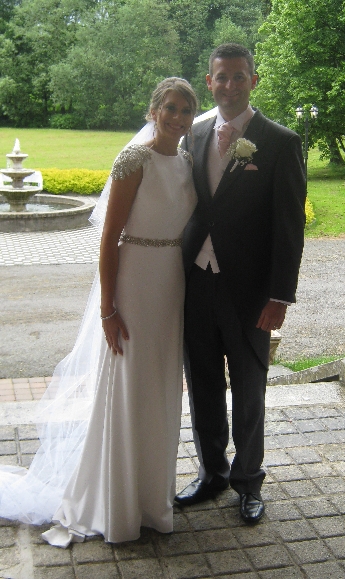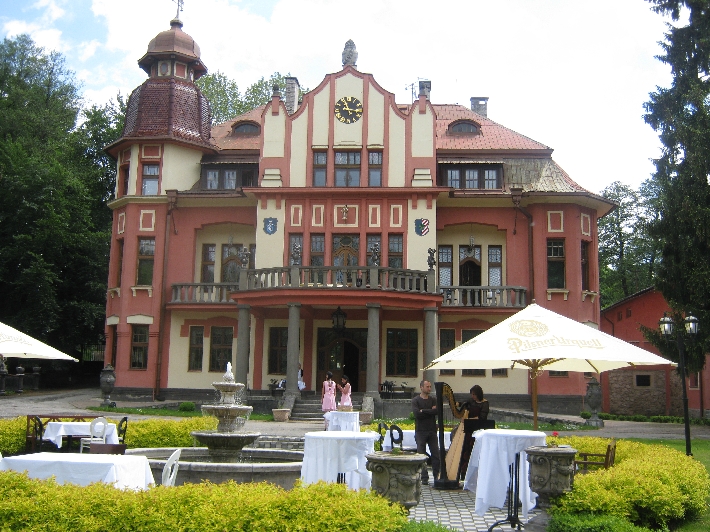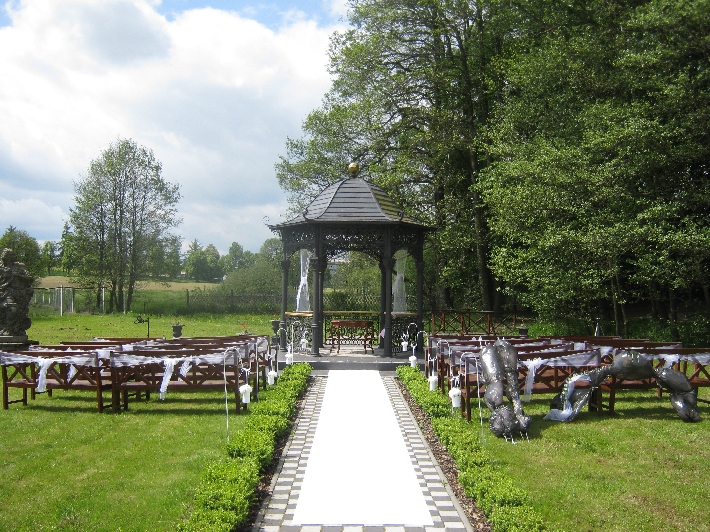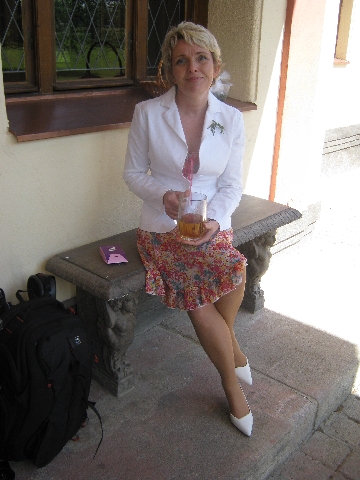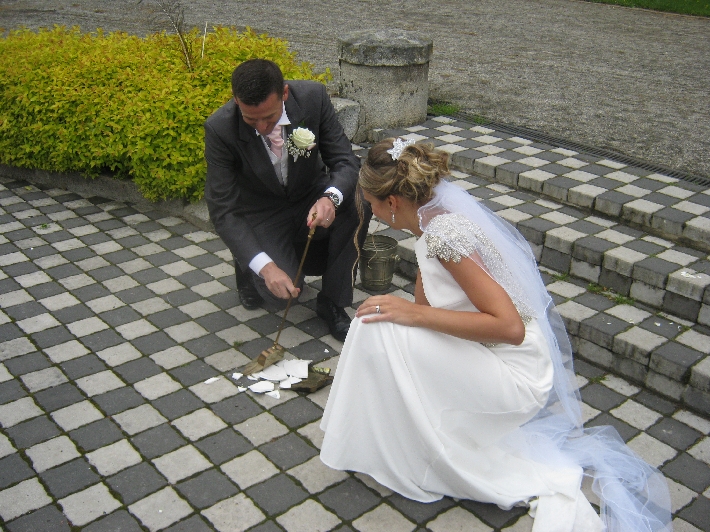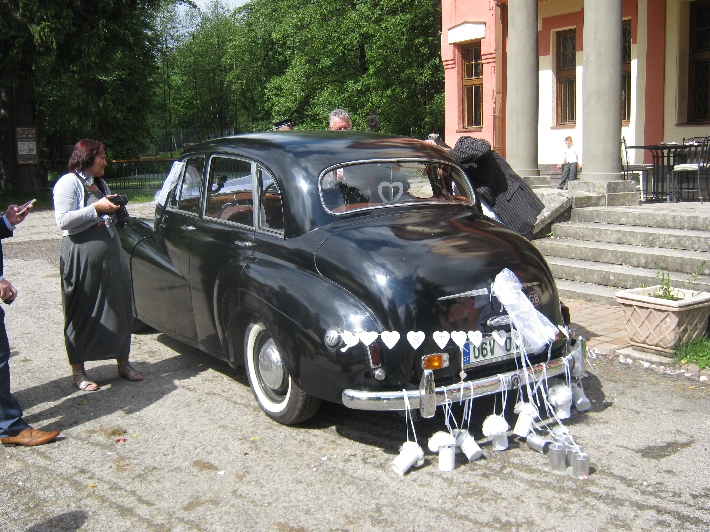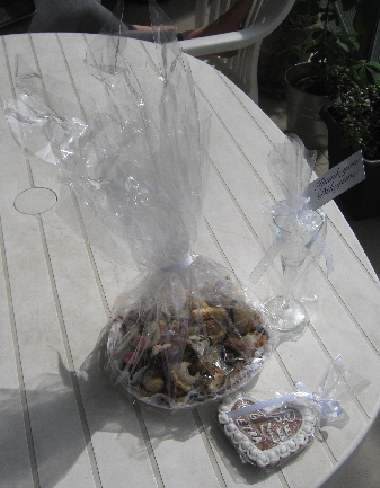
Just a week after conducting my first wedding of 2015, on Saturday 6th June I conducted my second of the year. But for the first time in nearly seven years, this wedding was conducted under laws governing marriage in England and Wales.
It was in July last year that my son Phillip’s best friend, Adam, wrote to me, saying that he and his long-standing girlfriend Claire, were planning to be married in late May/early June 2015 and that they would like me to officiate, and asking whether I was willing and able to do so. As I normally travel to the UK for a week, once a year, I replied agreeing to their request, planning for the wedding to be at the centre of my annual UK visit. Adam did also tell me that he had already asked Phillip to be his best man, so I did fully understand from the start, what I was letting myself in for 🙂
I flew from Prague to Luton by Wizzair on the evening of Tuesday 2nd June, picked up my hire car, and set off to drive to Phillip’s current home in Nottingham. Unfortunately, whoever is in charge of Britain’s motorway network was clearly conspiring against me.
First of all, the spur road from Luton Airport to the M1, was ‘closed for overnight resurfacing work’, resulting in a tour of parts of Luton I had no desire to see! Then a very long stretch of the M1 through Northamptonshire, had a 50 mph speed limit because of road works. Finally, just as I was getting near to Nottingham, I found another stretch of the M1 completely closed overnight, sending me on a long detour, deep into the Leicestershire countryside.
I spent the Wednesday recovering, then on Thursday, headed back down to Oxfordshire. I enjoyed lunch at Ripon College, Cuddesdon, followed by meetings and a tour of the college and grounds. The reason for this visit will be revealed in a future blogpost, probably in a month or so’s time. Then it was on to the wedding rehearsal in the evening.
Adam and Claire’s wedding was arranged to take place in the Parish Church of St. Michael and All Angels in the North Oxfordshire village of Fringford, one of the Churches I was Rector of until moving to Prague in September 2008. It is the village where Adam grew up and where his parents still live. It did seem strange being back in Church where I hadn’t taken a service for nearly seven years. It took me some time, remembering where all the light switches were located!
At the rehearsal, we went through the service together, got Adam and Claire to practice making their vows and the words used at the exchange of rings, as well as answering various questions that the couple & other participants had. I also picked up the two marriage registers, blank quarterly return for the Oxfordshire Registrar and the marriage certificate book, to enable me to fill them all out correctly, ready for the big day.

Saturday 6th June dawned fine and sunny, though somewhat windy. Fortunately, whilst both the mother of the bride and mother of the groom wore fascinators, there were no ladies wearing hats that would get blown across the churchyard. Quite honestly, it would be difficult to ask for better weather for a wedding day.
One of the privileges of ordained ministry is that you get to share in peoples ‘major life events’, as sociologists would describe them. When conducting a marriage service, there always needs to be a balance kept between the solemnity and joy of the occasion. As I said in my address, after the couple had given their consent, (said ‘I will’ and not ‘I do’), but before they made their vows to each other and exchanged rings, they were about to make very important promises; with God, and those who know them best of all – their family and friends – as witnesses. But I was also able to crack a joke at Phillip’s expense, well aware there would be at least one at mine in his best man’s speech later in the day. And when speaking about the third reason that ‘marriage is given’ – as ‘the foundation of family life in which children may be born and nurtured’ – according to the preface of the marriage service, I did speak of ‘little Garners’ being produced, much to the amusement of the congregation and bringing smiles of pleasure from the prospective grandparents.
Whilst I didn’t have to cope with using a bilingual liturgy as I had the previous weekend, I did have to ensure the correct completion and signing of the marriage registers, quarterly return and marriage certificate, something I hadn’t done for nearly seven years. And I couldn’t just sign as ‘Rector’, as I had previously for over fifteen years, but instead as ‘Priest-in-Charge of St. Clement’s, Prague, Czech Republic – Officiating Minister’. A bit of a mouthful I’m sure you’ll agree 🙂
The wedding was followed by a most enjoyable reception, held in a splendid marquee, erected in the grounds of the home of Claire’s parents on the outskirts of the nearby village of Middleton Stoney. Both the bride’s father and the groom, apologised for not being used to public speaking, but both made excellent speeches, rightly sticking to their previously well-prepared text.
The best man was inevitably, somewhat longer, with some additional ad-libbing. But he did keep us all amused. In thanking his Dad for conducting the marriage service, he described it as ‘a cracking gig’, which caused much laughter. It really was a great wedding and a privilege to be part of it.


